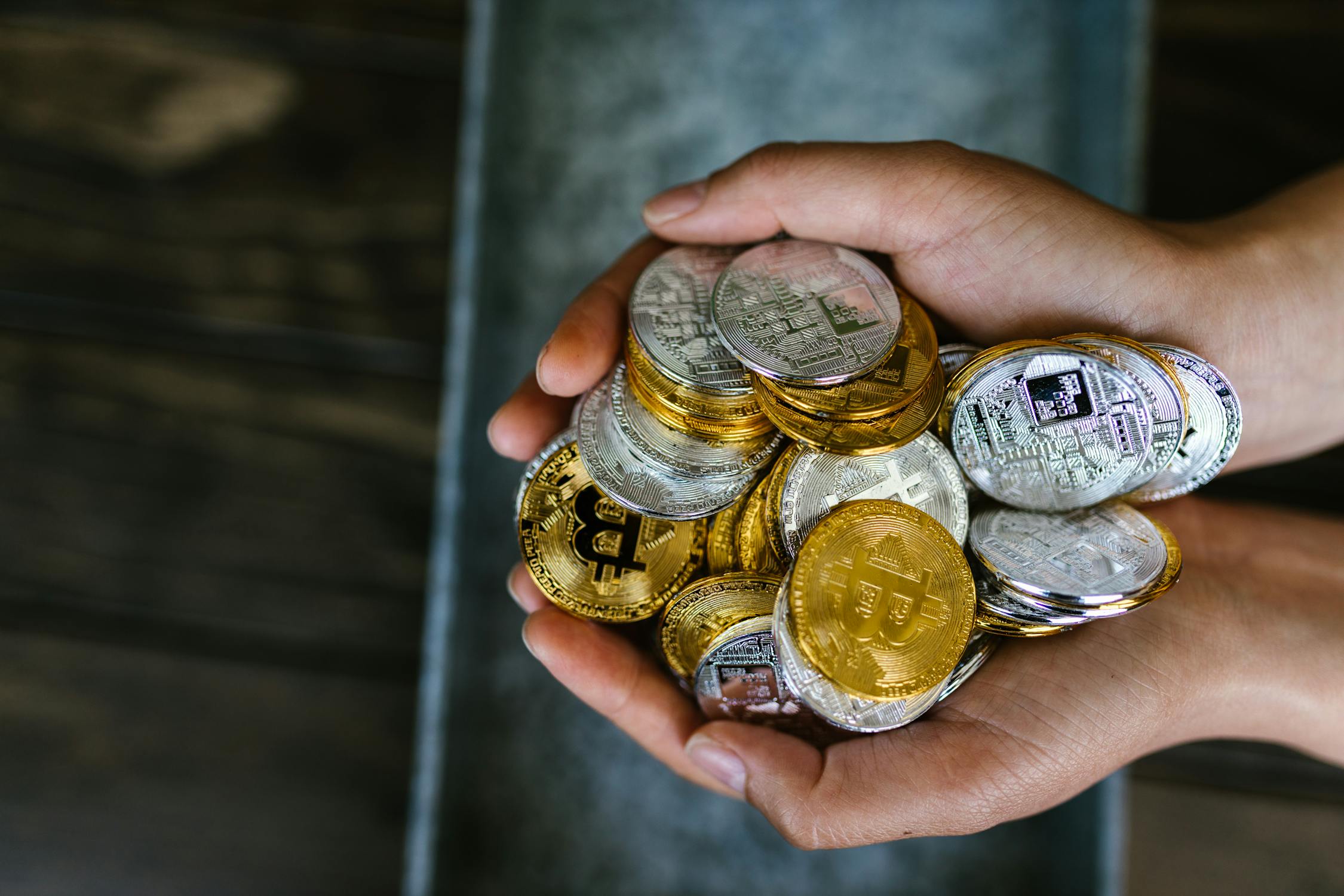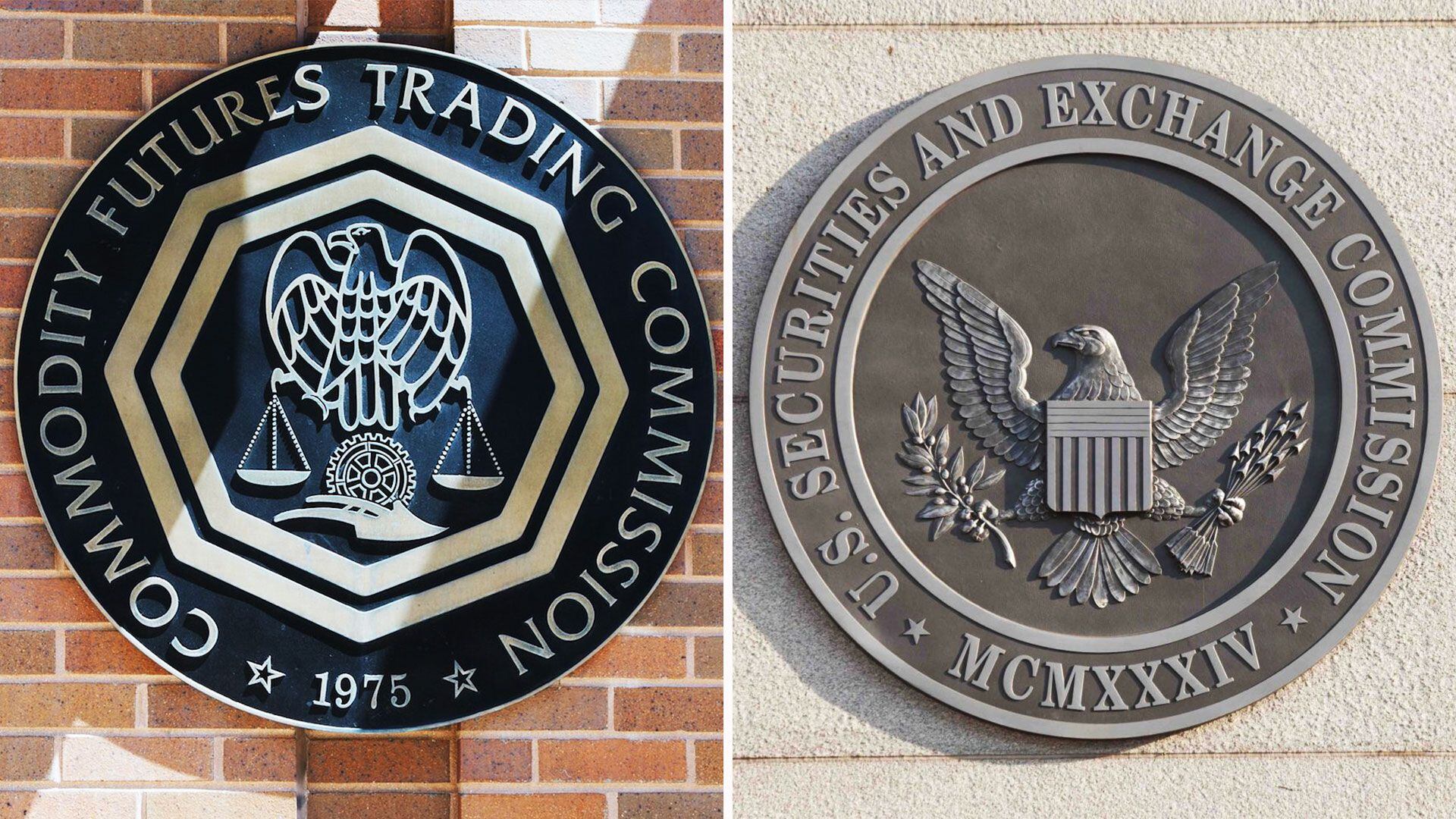If you’re reading this, chances are you’re familiar with, own, invest in, or actively trade cryptocurrencies. Now, if you fall into any of the last three categories and are asked to participate in a survey asking about the real-life uses and economic classification of the tokens you’re holding, how well do you think you’d do?
Honestly, it’s totally understandable if you don’t have much to say, unless you happen to be an expert with extensive experience in traditional finance (TradFi). Most people can easily learn about the use cases of cryptocurrencies they hold by reading project whitepapers. However, the classification of cryptocurrencies as financial instruments in particular is a pretty complex issue that even regulatory bodies in the United States and many other countries are struggling to figure out.

Here’s an interesting tidbit: cryptocurrencies have actually been around since the 90s, despite what many people may think. The first cryptocurrency, called eCash, was created by a brilliant cryptographer named David Chaum through his company Digicash in 1990. In fact, Chaum had even published a paper back in 1983 titled “Blind Signatures for Untraceable Payments.”

However, it took a few more decades for cryptocurrencies to really take off and become widely recognized and adopted, as we’re seeing today. The crypto boom was sparked by the creation of Bitcoin in 2009, designed for peer-to-peer payments by the still-anonymous individual or group known as Satoshi Nakamoto.
The industry has since grown exponentially and is showing no signs of slowing down, despite viciously volatile market cycles dotting its 14-year run. As of March 2022, there were over 9,000 other cryptocurrencies on the market, with more than 70 having a market capitalization greater than $1 billion.
Where Did Things Start to Go Wrong?
The rise of cryptocurrencies and the exciting financial prospects they seemed to hold sparked a frenzy akin to a modern-day gold rush, drawing the attention of people, institutions and governments and regulators worldwide. People began flocking to invest in crypto as a means to safeguard their wealth from inflation, conduct both local and international transactions, engage in discreet exchanges, and explore lucrative trading and investment opportunities, all beyond the reach of conventional government oversight.
Unsurprisingly, unscrupulous actors quickly caught on and began using cryptocurrencies for illicit activities like fraud, money laundering, terrorism financing, tax evasion, and other criminal endeavours. The industry gradually became a playground for scammers exploiting unsuspecting individuals and even institutions looking to cash in on the crypto frenzy, all of which has led to a lot of bad press for the industry.
In response, governments and regulatory bodies swung into action to establish some level of control. Some countries, such as China, even went so far as to outrightly ban cryptocurrencies, while others, like India, enforced taxation measures. Additionally, many jurisdictions began demanding that crypto companies obtain licences before they could operate.
The State of Crypto Regulation
Frankly, the current state of crypto regulation is quite chaotic, to say the least. The lack of clear and consistent regulatory frameworks has created a lot of uncertainty and challenges for businesses and individuals trying to navigate this rapidly evolving industry. It’s like the wild west out there, with scammers taking advantage of people looking to cash in on the crypto frenzy.
The crypto community has long been divided on the issue of regulation, and it’s safe to say that opinions are all over the map.
You’ve got the Bitcoin maxis, who firmly believe that Bitcoin is the be-all and end-all of cryptocurrencies, in fact, the only digital asset—that truly holds value and should be recognized as such; along with stakeholders in the decentralized finance (DeFi) sector vehemently opposing attempts at regulating the entire cryptocurrency industry. Their argument is deeply rooted in the idea that regulation undermines the fundamental tenets of cryptocurrencies and hinders their intended purpose.
On the flip side, some industry players welcome regulatory oversight as necessary for achieving much-needed stability. They argue that the absence of proper regulation could leave the industry vulnerable to all sorts of abuse and unethical practices that would not only harm those involved but also dent the industry’s reputation. To them, it’s not just a matter of red tape; it’s about ensuring a fair and ethical environment for everyone.
However, recent developments in the crypto space and the growing realization of human fallibility have caused many people to reconsider their stance on regulation. Many are starting to warm up to the idea of implementing regulatory measures that can benefit the industry as a whole and protect participants from potential risks and pitfalls.
Dealing with crypto regulation is a complex issue that requires careful thought and collaboration to strike the right balance between innovation and security. Thankfully, some regions have taken steps to establish comprehensive regulatory frameworks. For example, the European Union has introduced the MiCA regulation for crypto assets.
The Debate Over Classifying Crypto as Securities or Commodities
One crucial aspect of regulation pertains to the classification of cryptocurrencies as financial instruments. Regulating innovative technologies with a direct financial element, such as cryptocurrencies, can be particularly challenging.
The difficulty lies in determining how to classify them – as securities, commodities, or something else entirely. Given recent global events related to crypto regulation, the ongoing debate surrounding the categorization of cryptocurrencies has gained even greater importance.
The argument can be divided into two main sides, each with valid points.
On the one hand, some argue that cryptocurrencies should be treated as commodities due to the uncertainties surrounding their categorization, as well as the unique nature of their underlying technology and applications. They believe that considering cryptocurrencies as commodities would better account for their unique characteristics.
On the other hand, another school of thought asserts that cryptocurrencies should be classified as securities, without any exceptions. They argue that this classification would provide a more comprehensive regulatory framework and align with existing securities laws.
This article explores the various viewpoints regarding the classification of cryptocurrencies as financial instruments. The argument can be divided into two main sides, each with valid points.
To truly understand this viewpoint in this classification debate, it’s important to have a clear grasp of the definitions of securities and commodities. So, let’s take a step back and clarify the fundamental questions: What exactly are securities and commodities, and how do cryptocurrencies fit into this framework?
What are Securities?
In simple terms, securities are financial instruments that you buy (invest in) with the aim of making profits. These investments typically rely on the efforts of others to generate those profits. Generally, financial transactions that fit into this definition are classified as securities.
In the United States, financial instruments are classified as securities if they meet the requirement of the Howey Test. This test has four requirements:
- an investment of money,
- an expectation of profit,
- a common enterprise, and
- profits derived from the efforts of a promoter or third party.
A financial transaction that does not satisfy all four requirements will not be subject to the laws governing securities. Stocks, bonds, and derivatives are typical examples of securities.
What are Commodities?
On the other hand, commodities are tangible assets. They are goods traded in the financial market that can be used as raw materials for production or consumed directly.
The prices of commodities are influenced by demand and supply. Examples of commodities include crude oil, sugar cane, and wheat. They are all physical goods that can be stored and transported and are important to the global economy.
While both securities and commodities can be invested in and traded for profits, they have distinct characteristics and are subject to different laws regarding their issuance. Securities represent ownership rights in a company (e.g., stocks) or debt obligations (e.g., bonds), while commodities are investments in raw products.
It’s important to note that a financial asset cannot be classified as both a security and a commodity simultaneously. It must be categorized as one or the other but not both.
So Are Cryptocurrencies Securities or Commodities?
Cryptocurrencies, as you may know, are digital currencies that exist on a blockchain. They can be used as a medium of exchange and a store of value, and they are designed to be decentralized without the control of a third party, such as the government or regulators.
Many argue that cryptocurrencies are better aligned with being classified as commodities rather than securities. This viewpoint is supported by several key arguments outlined below.
Why are Cryptocurrencies Commodities?
1. Cryptocurrencies are designed for utility
Cryptocurrencies are primarily created for utility within the blockchain ecosystem. Bitcoin (BTC), for example, was introduced as a digital currency to enable faster, cheaper, and more transparent transactions.
Additionally, cryptocurrencies like Ethereum (ETH), Solana (SOL), and Binance Coin (BNB) play crucial roles in facilitating transactions within their respective blockchain networks. This utility-focused design aligns cryptocurrencies more closely with commodities, which are typically valued for their usefulness.
Furthermore, the acceptance of cryptocurrencies as legal tender in certain countries, like El Salvador’s adoption of Bitcoin, challenges the notion of categorizing them as securities. When a cryptocurrency is widely accepted as a means of payment for goods and services, it becomes more difficult to fit it within the framework established by the Howey test, which is commonly used to determine if an asset qualifies as a security.
2. Cryptocurrencies operate on decentralized networks
Cryptocurrencies work differently than traditional securities because they operate on the principles of decentralization. Crypto investors do not rely on a centralized entity to generate profits or manage their capital. Many crypto companies function as decentralized autonomous organizations (DAOs), where the governance of underlying cryptocurrencies is driven by the community.
For instance, Uniswap’s UNI token enables investors to actively participate in project decision-making without being subject to centralized control. Also, crypto investors are free to directly engage in activities such as staking and trading, allowing them to independently generate profits without relying on third parties.
3. Cryptocurrencies do not always require a direct investment of money
One tenet of the Howey test is that securities must involve an investment of money. However, this criterion does not always apply to owning cryptocurrencies. Cryptocurrencies can be obtained through different methods, such as mining, a process in which high-end computers perform computational work to create new tokens, or through airdrops, which are mechanisms crypto companies use to distribute tokens fairly among their communities. In neither of these cases does the acquisition of a cryptocurrency require a direct investment of money.
4. Cryptocurrencies obey the law of Supply and Demand
Similar to commodities, the value of cryptocurrencies is influenced by supply and demand dynamics. Increased demand for a crypto token can drive its price up, while limited supply introduces an element of scarcity. This relationship mirrors the value perception in commodities like gold and oil, which are also subject to supply constraints.
For instance, Bitcoin has a capped supply of 21 million BTC, creating a perception of limited availability. This parallels the perception of value found in commodities such as gold and oil, which also derive value from their limited supply. In contrast, stocks do not have a maximum supply and can be issued or repurchased by companies without such constraints.
5. Cryptocurrencies are created via tangible means
Creating a cryptocurrency like BTC is done through mining, and it is different from stocks that can be printed from “thin air,” literally. Similarly, to create a new ETH token, validators have to stake their ETH and fulfill specific requirements. This process resembles the extraction of commodities like gold and oil, emphasizing the commodity-like nature of cryptocurrencies.
Why Some View Cryptocurrencies As Securities
While we’ve discussed why cryptocurrencies are often seen as commodities, there are situations where individuals argue that cryptocurrencies should be classified as securities. These cases can be summarized as follows:
1. Involvement of Centralized Entities
Although cryptocurrencies are designed to operate in a decentralized manner, the involvement of centralized entities can introduce elements that align with securities. For example, exchanges offering custodial services and investment opportunities create a level of centralization. When investors trust these exchanges to generate profits on their behalf, it may meet the requirements outlined in the Howey test.
An illustration of this point is the recent enforcement action taken by US Securities and Exchange Commission (SEC) against BlockFi, which resulted in a $100 million fine for the company’s interest-bearing lending products offered to customers.
2. Initial Coin Offerings (ICOs)
Initial Coin Offerings (ICOs) serve as a means for crypto companies to launch their tokens and distribute them to the public. While purchasing cryptocurrencies through an ICO doesn’t typically grant direct ownership in a company, investing in ICOs often involves an expectation of profit and the belief that the tokens will appreciate once they are publicly traded on exchanges.
This expectation arises from the notion that investors can acquire tokens at a lower price during the ICO phase compared to their anticipated market value upon listing.
The SEC’s lawsuit against Ripple Labs is based on these claims, asserting that crypto ICOs provide sufficient grounds for classifying the XRP token as a security.
SEC vs CFTC: Regulatory Disparity in the Cryptocurrency Industry
The Securities and Exchange Commission (SEC) and the Commodity Futures Trading Commission (CFTC) are independent regulatory bodies in the United States responsible for regulating security and commodity markets, respectively. These regulatory entities operate within their jurisdiction under the laws guiding their operations.
The SEC operates under the principles of the Howey test, which determines whether an asset qualifies as a security and does not regulate assets that do not meet its definition of a security.
Most cryptocurrencies, with the exception of Bitcoin, are generally classified as securities by the SEC. One possible reason for Bitcoin’s exemption could be the challenge of attributing legal responsibility and pursuing legal actions against its anonymous creator.
SEC Chair, Gary Gensler, has been vocal about cryptocurrencies being subject to securities laws and has expressed concerns about fraud within the asset class. The SEC generally seeks to regulate cryptocurrencies and considers them, including stablecoins, to fall under the requirements of the Howey test.
In December 2020, the SEC filed a lawsuit against Ripple Labs and its executives, alleging that the sale of XRP tokens constituted an unregistered securities offering. The SEC argued that XRP should be treated as a security and subjected to securities regulations. The lawsuit claimed that Ripple Labs engaged in continuous sales of XRP tokens to investors without proper registration as a security while implying that investors could expect to make a profit from an asset that Ripple Labs essentially controlled and managed.

On the other hand, the CFTC views certain cryptocurrencies, such as Bitcoin and Ethereum, as commodities and holds jurisdiction over crypto derivatives. The CFTC consistently regards virtual currencies as commodities under the Commodities Exchange Act (CEA).
Former CFTC Chairman Heath Tarbert reiterated this position in December 2020, emphasizing the importance of proper regulation to ensure market integrity and investor protection while promoting financial market innovation.
In February 2021, the CFTC charged Coinbase for alleged false reporting and wash trading of digital assets, including Bitcoin. Coinbase settled with the CFTC in March 2021, agreeing to pay a $6.5 million fine without admitting or denying wrongdoing.
The SEC and the CFTC also differ in their approach to Bitcoin. The CFTC, for instance, approved Bitcoin futures contracts in 2017, treating Bitcoin as a commodity and regulating its futures trading.
However, the SEC has rejected multiple proposals for Bitcoin exchange-traded funds (ETFs), expressing concerns about market manipulation, liquidity, and the lack of robust surveillance and custody measures in the underlying Bitcoin market. This cautious approach to Bitcoin ETFs differs from the CFTC’s approval of Bitcoin futures contracts.
These diverging positions of the SEC and the CFTC highlight the regulatory uncertainties and complexities surrounding the classification of cryptocurrencies. Although the cryptocurrency industry operates on a global scale involving numerous financial entities, the fair representation and treatment of cryptocurrencies by influential institutions like the SEC and CFTC can significantly shape the overall perception and future trajectory of cryptocurrencies.
It’s important to note that the classification of cryptocurrencies is still a topic of ongoing discussion, and regulatory bodies may have different approaches in different jurisdictions.
In Conclusion,
- The debate over whether to classify cryptocurrencies as securities or commodities can be settled by understanding the dynamic nature of the underlying technology.
- Considering their digital nature, decentralized operation, acquisition methods, supply-demand dynamics, and mining processes, cryptocurrencies align more closely with commodities. While there are instances where cryptocurrencies may exhibit characteristics of securities, a clearer understanding and classification can help foster regulatory clarity and facilitate the industry’s growth.
- The ongoing uncertainty and lack of consensus between regulatory bodies like the SEC and CFTC highlight the pressing need for a comprehensive and updated regulatory framework that specifically addresses the distinct features of cryptocurrencies.
- Relying on outdated laws meant for traditional assets undermines the unique nature and potential of cryptocurrencies. It may be time to establish a new regulatory body equipped to navigate the complexities of the crypto industry and ensure appropriate oversight and protection for all stakeholders involved.
- Only through clear and well-defined regulations can we fully unlock the true potential of cryptocurrencies. By establishing a regulatory framework that acknowledges the intricacies of the crypto industry, we can strike a balance between protecting investors and fostering innovation. This will not only provide greater clarity for market participants but also contribute to the long-term stability and development of the cryptocurrency ecosystem.
Disclaimer: This article is intended solely for informational purposes and should not be considered trading or investment advice. Nothing herein should be construed as financial, legal, or tax advice. Trading or investing in cryptocurrencies carries a considerable risk of financial loss. Always conduct due diligence.
If you would like to read more articles like this, visit DeFi Planet and follow us on Twitter, LinkedIn, Facebook, Instagram, and CoinMarketCap Community.
“Take control of your crypto portfolio with MARKETS PRO, DeFi Planet’s suite of analytics tools.”





















